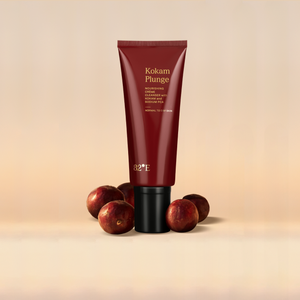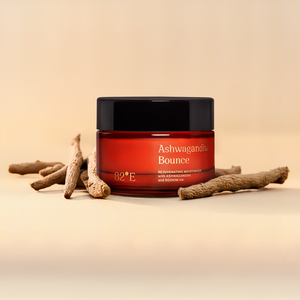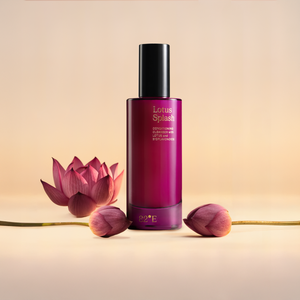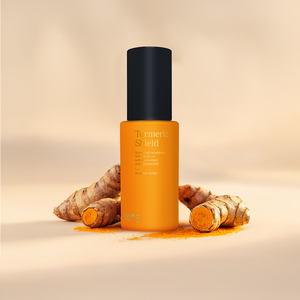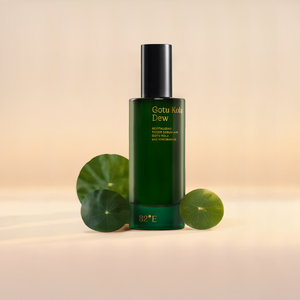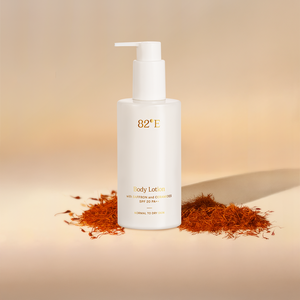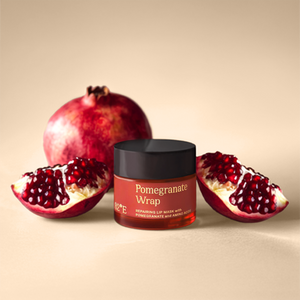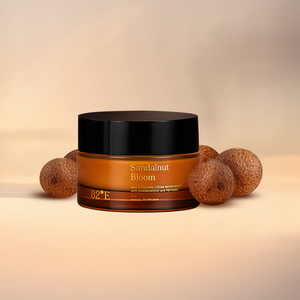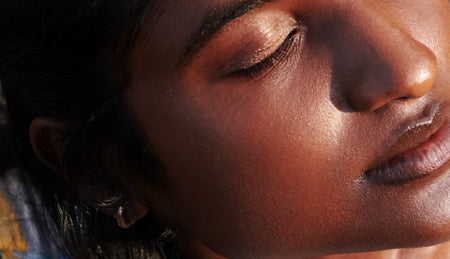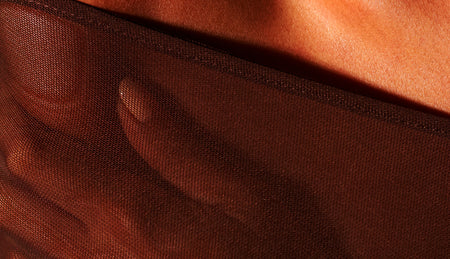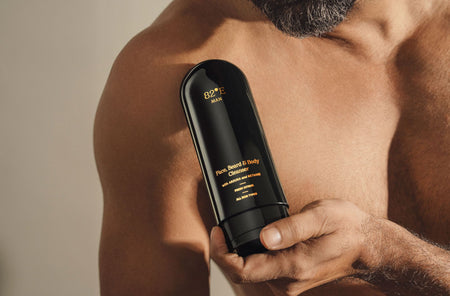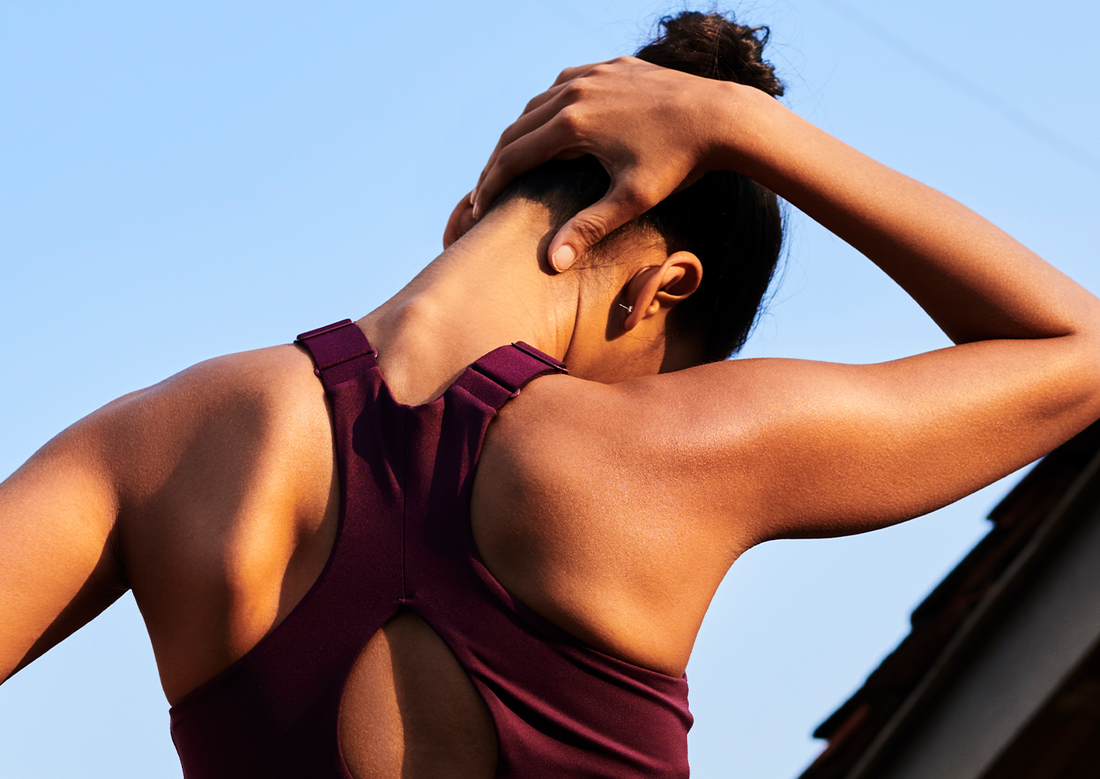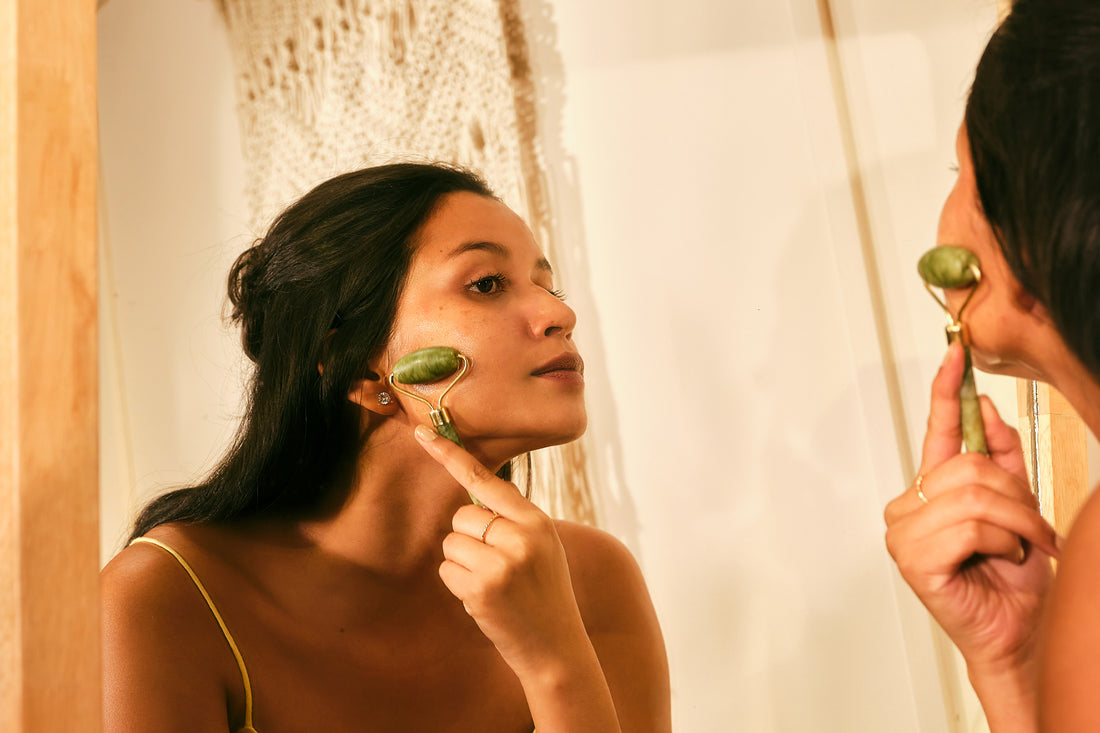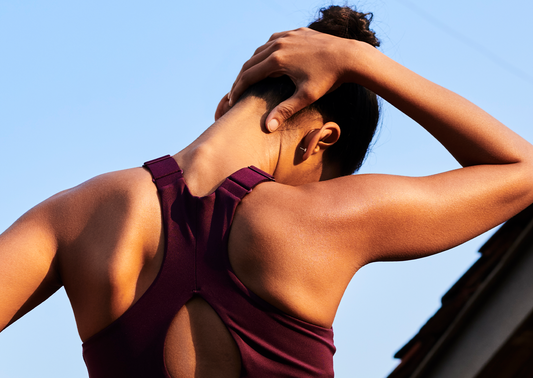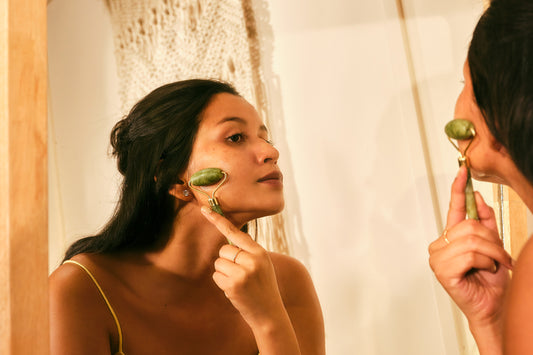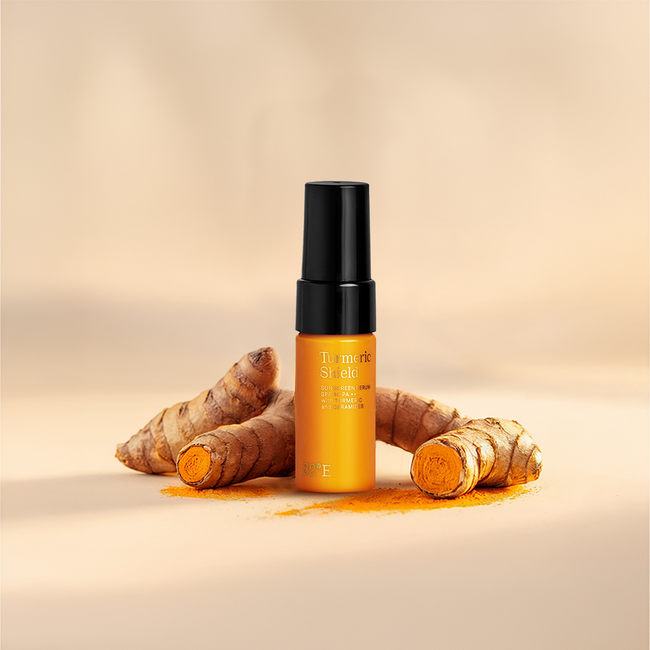
It is widely accepted that sun protection is one of the most vital components of summer-time skincare. But have you wondered how sunscreen can do a lot more good for your skin as a preventive measure against harmful UV rays all year around? Dermatologists recommend that you apply a generous amount of sunscreen daily throughout the year, whether stepping out in the sun or staying indoors to protect and nourish your skin even beyond UV protection. Most skincare experts recommend reapplying sunscreen every two to three hours, irrespective of whether you are stepping out or staying in. In this article, we'll delve into the significance of sun protection and why it should be an unskippable step in your skincare routine.
The Sun’s Effect on Your Skin
The sun provides Vitamin D to your skin, which is essential for normal bone formation and health. So, 10 to 30 minutes of sunlight daily is recommended by various nutritionists and dermatologists. Studies suggest that sun exposure is essential to boost vitamin D production in your body. In fact, vitamin D has been linked to being a crucial positive influence on mental health.
However, the sun’s ultraviolet causes adverse effects and can be the primary reason for skin damage. The most commonly associated one is sunburn—but there are many more serious and long-term effects of sun damage.
According to the American Academy of Dermatology, “When sunlight hits your skin, it damages healthy cells. Without sun protection, this damage can build up. In time, you see signs of sun damage like freckles, age spots, and wrinkles.”
According to Yale Medicine: “Dermatologists refer to the damage the sun does to the skin by several names, including photoaging, photodamage, solar damage, or sun damage. It happens when ultraviolet (UV) light hits skin unprotected by sunscreen, causing DNA changes at a cellular level. Because photodamage happens in the deepest layers of the skin—the dermis—it can take years before the damage surfaces and becomes visible.”
That’s why sun protection is not just a seasonal concern during the summer months when the sun feels most intense. UV radiation can harm your skin year-round, even on cloudy or overcast days—and sunscreen should be a part of your skincare routine as early in life as possible.
How do Sunscreen and SPF Work?
Sunscreen is not just another skincare product; it's your skin's shield against the harmful effects of ultraviolet (UV) radiation from the sun. Its significance in your daily skincare routine cannot be overstated, as it plays a pivotal role in protecting your skin from a range of UV-related issues. Here's why sunscreen is your primary defense against UV damage:
- Preventing Sunburn: Sunburn is not only painful but also a clear sign of skin damage due to UVB rays. Sunscreen acts as a barrier to prevent these rays from causing immediate harm to your skin, allowing you to enjoy the outdoors without suffering the consequences.
- Preventing Premature Aging: UV radiation accelerates the aging process by breaking down collagen and elastin fibers in the skin, leading to wrinkles, fine lines, and sagging. Sunscreen helps maintain a youthful appearance by protecting against this UV-induced aging.
- Minimizing Hyperpigmentation: Sun exposure can lead to the development of dark spots, freckles, and uneven skin tone. Sunscreen helps prevent and minimize these forms of hyperpigmentation, keeping your complexion more even and radiant.
- Sunscreen comes with SPF measurement. SPF, or Standard Protection Facto, measures the level of UVB protection the sunscreen will provide to your skin. Below is the protection level of each SPF:
- Low protection: SPF is below 15
- Medium protection: SPF is 15 to 29
- High protection: SPF is 30 to 49
- Very high protection: SPF is over 50
To be precise, SPF focuses on the time taken by a UVB ray to get through the sunscreen and cause damage to the skin in comparison to the time taken without sunscreen.
This factor is calculated by dividing the amount of sun radiation that causes skin reddening when sunscreen is applied with the amount required without sunscreen.
This is calculated by applying 2 milligrams of sunscreen for each square metre of the skin’s surface. If it takes 30 times longer to burn the skin with sunscreen than without sunscreen, the SPF is 30.
How to Choose a Sunscreen
Contrary to common misconceptions, sunscreen is not reserved for a specific skin type or tone. It is a skincare essential for everyone, regardless of their skin type or complexion. One should invest in a good, effective, and suitable sunscreen for all skin types. Sunscreens containing natural ingredients like antioxidants from turmeric and soothing agents like patchouli are a plus. Here are the most important criteria to consider when choosing a sunscreen:
- Broad-Spectrum Protection: Look for a sunscreen labeled as "broad-spectrum," which means it provides protection against both UVA and UVB rays. UVA rays contribute to premature aging, while UVB rays are responsible for sunburn. Broad-spectrum protection helps guard against both types of damage.
- SPF Level: SPF (Sun Protection Factor) measures the sunscreen's ability to protect against UVB rays, which cause sunburn. Choose an SPF rating that suits your needs. SPF 30 is a popular choice for daily use, offering adequate protection for most people. Higher SPFs provide more extended protection but may not significantly improve protection beyond SPF 50.
- Skin Type and Formulation: Consider your skin type and any sensitivities when choosing a sunscreen. Some sunscreens are formulated for specific skin types, such as oily, dry, or sensitive skin, and come in different formats such as gel, oil, or serum. If you have sensitive skin, look for sunscreens labeled as “clinically-tested” or "dermatologist-tested" to minimize the risk of irritation. Consider sunscreens with no white cast that melt into your skin.
How to Apply Sunscreen?
Step 1: Use a Sufficient Amount
Start with a clean face. If you use a moisturizer, apply it before sunscreen. Dispense an adequate amount of sunscreen onto your fingertips. For your face and neck, you generally need about a teaspoon of sunscreen.
Step 2: Apply Sunscreen 15-30 Minutes Before Sun Exposure
Begin by dotting the sunscreen evenly across your face, neck, and other exposed areas, such as your ears and the backs of your hands.
Step 3: Reapply Every Two Hours or More Often if Swimming or Sweating
Sunscreen effectiveness diminishes over time, so it's essential to reapply regularly, especially if swimming or sweating.
Step 4: Cover All Exposed Areas, Including the Neck, Ears, and Backs of Hands
It's crucial to apply sunscreen to all exposed areas of your body, not just the face. Don't neglect your lips. Use a lip balm or lipstick with SPF to protect your lips from sunburn.
Sunscreen for Every Season
If you're wondering whether you should use sun protection throughout the year, the answer is always “yes!” With the right sunscreen, you can confidently step out in the sun with hydrated and nourished skin.
Remember, the sun never goes on vacation; even in the winter, you are at risk of skin damage due to UV rays. Even cloudy skies in monsoon will not stop UV radiation.
Common Myths Surrounding Sunscreen
- Sunscreen Prevents Body from Absorbing Vitamin D: According to a report by Harvard Medical School, “very few people put on enough sunscreen to block all UVB light, or they use sunscreen irregularly, so sunscreen's effects on vitamin D might not be that important. An Australian study that's often cited showed no difference in vitamin D between adults randomly assigned to use sunscreen one summer and those assigned a placebo cream.”
- Sunscreen Causes Health Issues: This myth came into existence from an old study on oxybenzone, one of sunscreens' active ingredients. The research found that rats exposed to oxybenzone experienced severe side effects. But years later, Archives of Dermatology found that rats were exposed to extremely high amounts of oxybenzone that would not be found in sunscreens and that after 40 years of oxybenzone being an ingredient in sunscreens, there are no published studies that demonstrate toxic effects in humans caused by absorbed oxybenzone.
- Sunscreen Does Not Expire: Sunscreen, like every other cosmetic, expires naturally after some time. The active ingredients present in sunscreens break over time. Moreover, expired sunscreens leave the skin unprotected.
FAQs about Sunscreen
Q: What does broad-spectrum sunscreen mean?
A: Broad-spectrum sunscreen is known for protecting against both UVA and UVB rays.
Q: When should I use sunscreen?
A: Sunscreens should be applied every day, 15-20 minutes before sun exposure. Remember to use sunscreen year-round, even in winter and monsoons.
Q: How are chemical and physical sunscreens different?
A: Chemical sunscreens have active ingredients such as oxybenzone, avobenzone, octisalate, octocrylene, homosalate, and octinoxate. They do not leave a white cast.
Physical or mineral sunscreens contain active ingredients like zinc oxide and/or titanium dioxide. They stay on the surface of your skin and reflect the sun’s rays.
Q: Will I get a higher SPF by adding the two different SPFs?
A: No. For example, SPF 30 + SPF 15 will not make SPF 45. The higher among the two SPFs would be the amount of sun protection applied. In this case, it will be 30.
Q: Is it enough to use makeup containing sunscreen?
A: There is nothing wrong with using cosmetics containing sunscreen, but most products have very low amounts of SPF. It can be as low as SPF 4; thus, your skin will not get adequate protection when exposed to the sun.
Our Protect Offerings
We have three sun protection products, which have been formulated for different skin types:- Turmeric Shield: A sunscreen serum with the soothing properties of turmeric and ceramides. Recommended for all skin types.
- Patchouli Glow: It is a sunscreen drop that nourishes skin with the goodness of patchouli and ceramides. Recommended for normal-dry skin types.
- Licorice Beam: A clear sunscreen gel with the natural properties of licorice and ceramides. Recommended for oily skin types.
